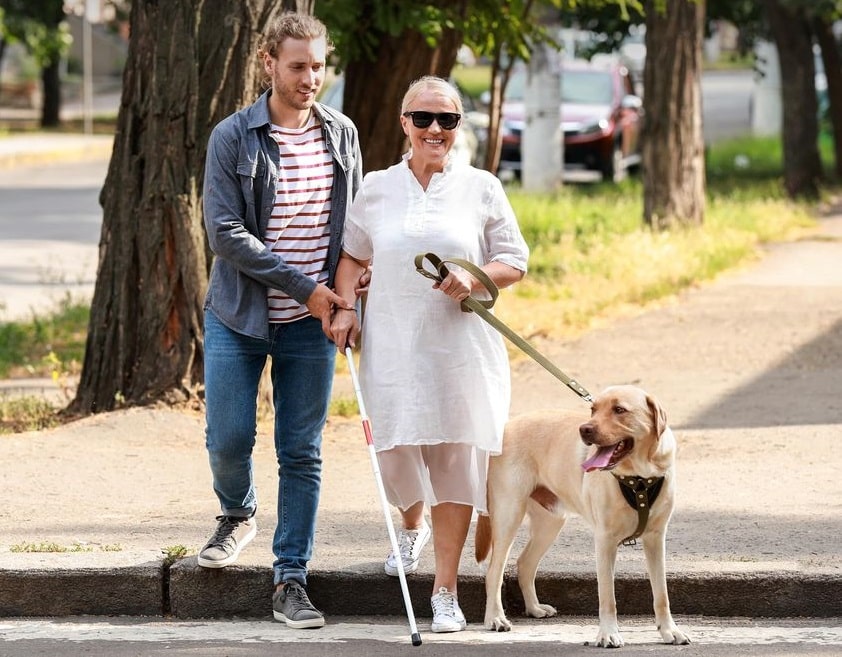
Unscrupulous producers of goods for the blind: the problem that is not spoken out loud
In a world where accessibility and inclusion are becoming increasingly important, it is important to pay attention not only to the quantity of initiatives for people with visual impairments, but also to their quality. This is especially true for products designed for the blind, such as signs, signposts, and information media with Braille text. Unfortunately, the reality is that the market is flooded with goods of dubious quality from irresponsible manufacturers. And these shortcomings are not just about aesthetics or comfort. It is a matter of safety, access to information, and human dignity.
Braille errors: not just typos, but critical
Some manufacturers print braille text with gross errors: mixed up letters, missing characters, uneven spacing. Such signs not only fail to fulfil their function, but also disorient the person trying to use them. Imagine that the letter ‘B’ is written on an information sign with an address instead of the house number ‘2’, since the designation of numbers in Braille requires an additional character - a similar effect is caused by false Braille. But unlike text for the sighted, errors in embossed text are difficult for a person who does not read Braille to spot.
Failure to comply with state standards (DBN)
In Ukraine, there are state building codes (DBN B.2.2-40:2018) that regulate the parameters of embossed dot fonts:
- the height of the dot should be at least 0.6 mm,
- the distance between dots, symbols and lines must comply with the established standards,
- the size of the dot font should be comfortable to touch.
However, some companies save money on materials or lack the technology, which makes the dots appear flat, blurred or even blend together. Some manufacturers, in an effort to meet the client's visual design requirements, enlarge or reduce the braille font. This makes the font completely unusable.
Disregard for the safety of people with disabilities
A separate problem is the ignoring or misunderstanding of the specifics of manufacturing goods for the blind. So many manufacturers make Braille signs with sharp corners or raw edges, which can lead to finger injuries. A person who uses touch as the main way of interacting with the environment must deal with absolutely safe objects. And here we are talking not only about comfort, but also about basic safety.
Stealing other people's layouts is an ethical degradation
Another disturbing aspect is plagiarism. Some manufacturers do not develop their own design solutions, but simply copy the layouts of signs and signs from the Internet, often without the permission of the authors. At the same time, they do not always understand how to properly adapt the layouts to technical and ergonomic requirements. The result is even more mistakes and even less responsibility.
Incorrect location
And finally, the issue of placing signs for people with disabilities is important. Despite common sense, some customers install signs in places where there are obstacles and it is difficult to get to a Braille sign or mnemonic scheme (customers forget that some categories of people need to physically touch the object to get information). And sometimes they even place facade signs in a glass frame to protect them from external influences or make them more presentable, completely disregarding the main function of a tactile sign - informing visually impaired people!
Who suffers?
First and foremost, it is the blind users themselves who do not have access to complete information. Organisations that order such products, relying on quality and compliance with standards, also suffer, but end up with a miserable imitation of inclusion.
What to do about it?
1. Increase control. Create a control commission to monitor the compliance of goods with DSTU and DBN standards.
2. Publicity. It is important to draw attention to such cases in the media, social media, and among communities of people with disabilities.
3. Educational work. Teach manufacturers, designers, architects how to work with Braille and universal design.
4. Support for responsible companies. It is important to create a market where the highest quality wins, not the cheapest.
Inclusion is not a marketing ploy or a formal requirement. It is about dignity, equality and respect. And if someone does not understand this, the whole community should pay attention to it.


